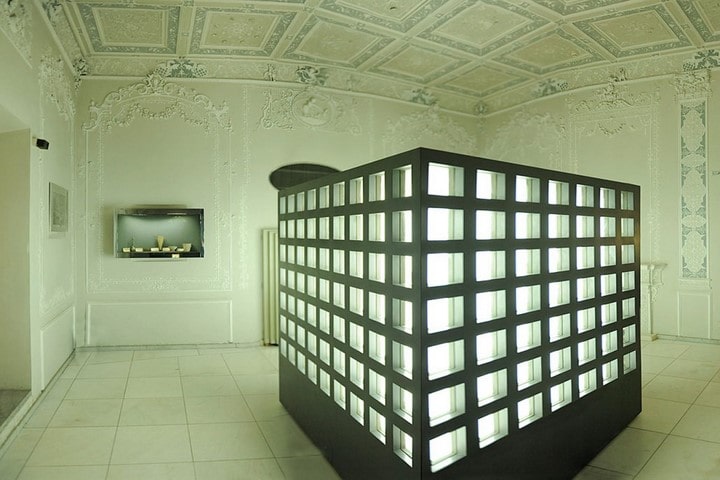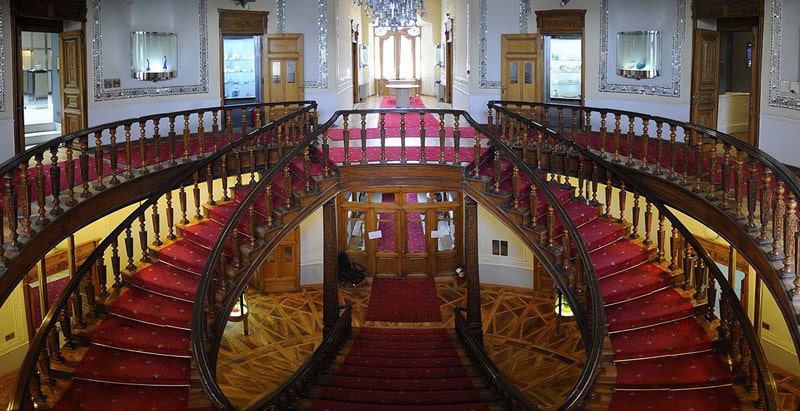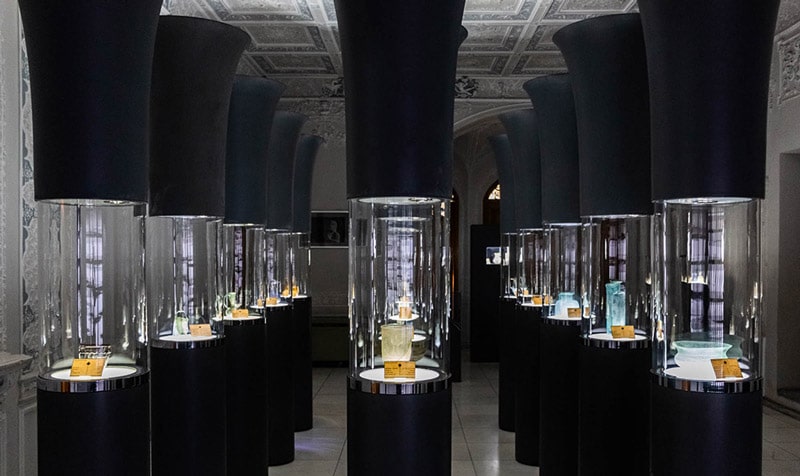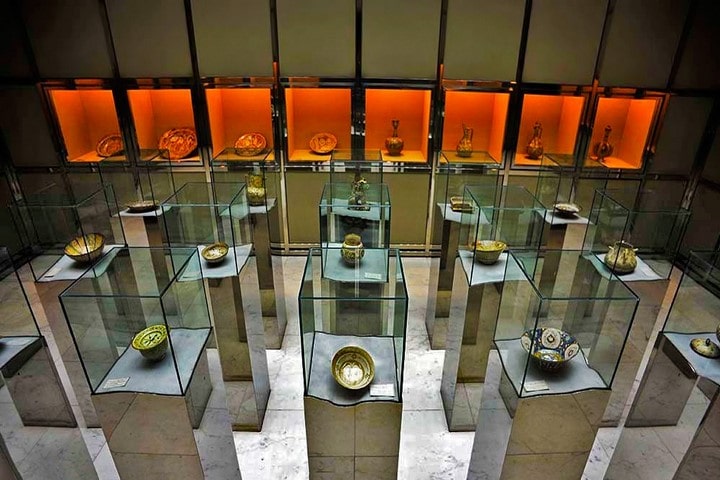Introduction in Glassware and Ceramic Museum of Iran
One of the famous streets of Tehran is Si-e Tir Street, which has played a significant role in the history of Iran and has housed many historic buildings and places. One of these sights is the Glassware and Ceramic Museum (Abgineh Museum). The museum is the first in Iran, located in one of the old houses of Tehran, and contains the ancient glass and earthenware dishes that attract the eyes of every viewer.
Regarding the history of the magnificent museum, it is interesting that it was built in 1912 A.D by Ahmad Qavam, nicknamed Qavam Al-Saltanah, one of the politicians and prime ministers of Iran. Qavam House was built in the middle of the Qajar-era Garden by Professor Ali Mohammad Memarbashi as Qavam’s office and residence. After the death of Qavam Al-Saltanah, the house has sold to the Egyptian embassy, and they turned the property into their embassy in Tehran.
Due to the strained political relations between Egypt and Iran during the period, the Qavam House was given to the Egyptians for seven years. It later became the Embassy of Afghanistan and the Commercial Bank. Finally, in 1975 A.D, during the second Pahlavi era, the place was purchased by Farah Pahlavi, and a new design was found by repairing and designing it by Iranian and European architects.

The architecture of the Glassware and Ceramic Museum of Iran
The House of Qavam Al-Saltanah was built in a garden of 7,000 square meters, includes an octagonal facade, and the architecture is a combination of Iranian-European architecture. The house consists of three floors (basement, ground floor, and first floor), and on the ground floor of the building, there are stunning two sides wooden stairs in the shape of two nesting horseshoes, which is inspired by the Russian style and finds a way to the second floor of the building.
Although the architecture of this house is very diverse, the art of Iranian masters can be seen everywhere, in the plastering of the roof and columns, the inlays on the doors and stairs, and the mirrorwork that has given the house the Persian atmosphere. Furthermore, the facade decorations of the building include 51 brickwork models inspired by the Seljuk era, and the presence of porches and columns at the entrance of Qavam House is one of the architectural features of the late Qajar and Pahlavi eras. After the revolution in 1989 A.D, sections were added to the mirror work of the second floor, in which religious and revolutionary themes can be seen.
The museum building has various sections such as exhibition halls, library, cultural products booth, and office section. The objects display section consists of six galleries. Historical objects from prehistoric times to pre-Islamic times on the ground floor are placed in Audiovisual, Mina, and Bolour Halls. Also, you will see the Sadaf, Lajevard, and Zarrinfam Halls on the first floor of the museum, where objects from the Islamic period to the present time are exhibited.

The Prehistoric artifacts at the Glassware and Ceramic Museum of Iran
To see the museum, you first visit the entrance section of the museum, where there are tools, instruments, types of materials, and colours used in making glass and examples of glass objects. Then you enter the Audiovisual Hall, where you can see a view of a prehistoric tomb, in which a skeleton of a primitive man, its tools, and ornaments are placed. It is fascinating to know that the prehistorical men thought that when they died, after the death, they would need their daily necessities, so they were buried with their personal belongings.
In Mina Hall, you can see the oldest glass and pottery works in the museum, which belongs to the early second millennium B.C, and includes glass rods made from Chogha Zanbil. In the Mina Hall, including the original pottery related to different civilizations, the architecture of the Achaemenid period in Persepolis has been used to design the showcases and other parts of the hall.

Works from the post-Islamic era in the Glassware and Ceramic Museum of Iran
Then it reached the Bolour Hall, which holds the name due to the presentation of glass objects, which are displayed the glass objects, in showcases taken from the architecture of the Achaemenid period and the Naqsh-e Rostam in Shiraz. Following the visit to the museum, you will reach the Sadaf Hall, which has the name due to the shell-shaped decoration and includes pottery and glass objects of the Islamic era.
Another hall of the Abgineh Museum is the Zarrinfam Hall, dedicated to the Zarrinfam pottery, known by the name due to the decoration technique. Finally, you will reach the Lajevard Hall, which consists of two sections; Lajevard One and Two, and its showcases are inspired by the form of Mongolian tents and tombs of that period. The objects of this hall include pottery and glass related to the Timurid and Ilkhanid periods up to the Safavid and Qajar periods.


